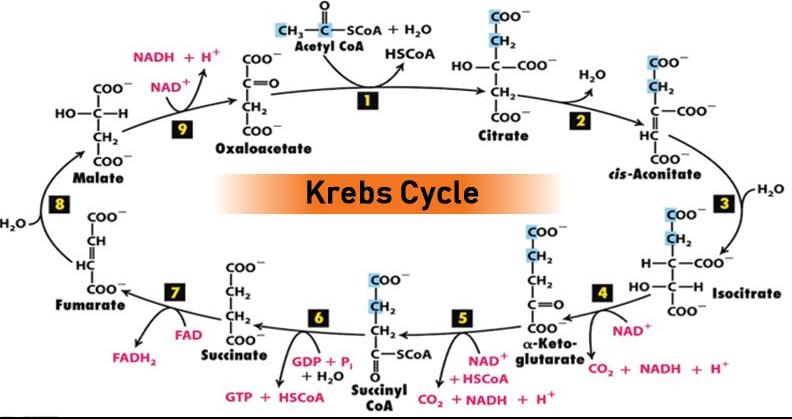Updated By: LatestGKGS Desk
Respiration: Krebs Cycle or TCA Cycle, Definition, steps, enzymes, chemical details

Tricarboxylic Acid Cycle or Krebs Cycle: Introduction, mechanism, steps, the formation of multiple chemicals, and ATP generation
Krebs cycle was discovered by H. A. Kreb, a German-born British Biochemist, he received the Nobel prize in 1953.
krebs cycle also known as the citric acid cycle or Tricarboxylic acid cycle (TCA). This cycle occurs in the matrix of mitochondria (cytosol in Prokaryotes). The whole cycle is explained in the following steps. The net result of the Krebs cycle is that for each acetyl group entering the cycle as acetyl-CoA, two molecules of Co2 are produced.
In the first step of the cycle, acetyl CoA joins with a four carbon acceptor molecule, oxaloacetate, to make a six carbon molecule called citrate.
Next step, this six carbon molecule loses two of its carbons as carbon dioxide molecules in a pair of similar reactions, generating a molecule of NADH particular time.
The enzymes that catalyze these reactions are fundamental controls of the citric acid cycle, promoting it up or reducing it forward based on the cell’s energy needs.
The resting four carbon molecule shares a series of further reactions, first gaining an ATP molecule—then reducing the electron carrier FAD to FADH2 and finally producing another NADH. This set of reactions regenerates the starting molecule, oxaloacetate, so the cycle can repeat.


